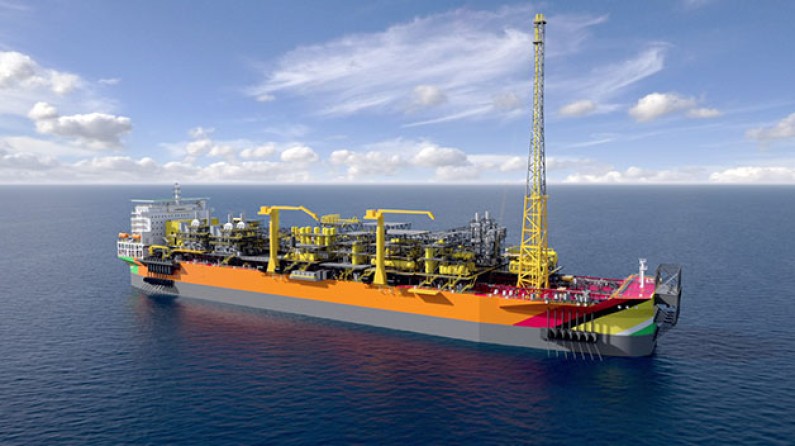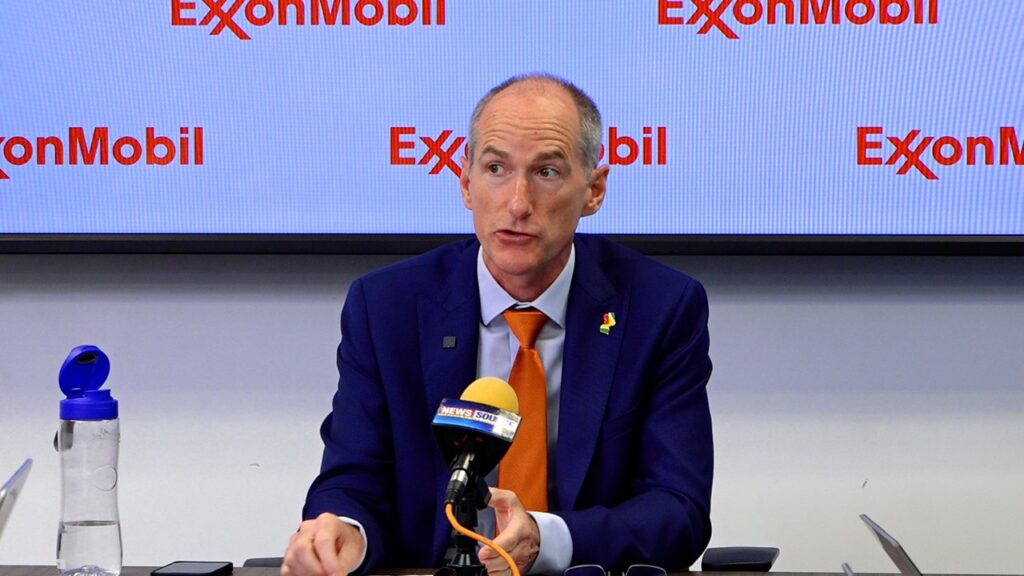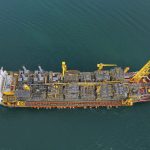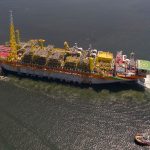
By Svetlana Marshall
Guyana will see a significant drop in oil production in the months of July and August when ExxonMobil will shut down the operations on two of its production vessels to facilitate a critical aspect of the pipeline component for the Gas-to-Energy Project.
At a media briefing today, President of ExxonMobil Guyana, Alistair Routledge said with three FPSOs in operation, the company is producing approximately 613,000 barrels of oil per day in the Stabroek Block. However, that number is expected to fall by more than 160,000 barrels per day when the operations of the Liza Destiny and Liza Unity are halted for two weeks to facilitate the pipeline connection.
“It will be roughly 14 days or two weeks for each one [the shutdown]. As you are aware from other reports, that Liza Destiny is producing a capacity of around 162,000 barrels a day, and the Liza Unity has a production capacity of around 252,000 barrels a day,” Routledge told reporters.
In the case of the Liza Destiny, the company will not be able to produce more than two million barrels of oil during the two-week period, and in the case of Liza Unity, more than 3.5 million barrels of oil will not be produced.
The ExxonMobil Guyana CEO said the shortfall in production for those two months was long anticipated. According to him, “it is not lost production” but rather “deferred production,” adding that the oil would still be in the ground.
He said the move to take the FPSOs offline is critical to ensure that the risers are safely connected to the FPSOs. The risers carry the hydrocarbons from the subsea wellhead on the seabed to the FPSO Unit on the surface.

“We do those to safely install the risers because it’s a major operation, and we want to make sure it is done safely, and not at risk of any of the ongoing operation. This was already known when we first sanctioned the gas -to-energy project but these kinds of installation would be needed. There were no existing gas risers for export of gas onshore. So, we knew about it at the time, we knew we needed to plan it in detail, which is what we have been doing,” the ExxonMobil Guyana President explained.
Meanwhile, the construction of the gas pipeline is moving apace. According to Routledge, it is approximately 70% complete, and well on track for completion by the end of the year.
“On the pipeline side, the offshore portion of the pipeline is 70% complete. We currently have two elements of the installation ongoing in the shallow waters, near to shore. There is one vessel that is leading that installation, and then there is another vessel out in the deep water that is laying pipe there. On shore, we are also making good progress, about 68% complete onshore. You can say roughly 70% complete across the entire pipeline,” he said.
Exxon is constructing the pipeline at the cost of US$1B. It is expected to transport gas from its offshore operations to a US$759M Power Plant and Natural Gas Liquids (NGL) Plant at Wales. The plants are being financed by the Government, and are expected to be completed by the end of 2025.



















You must be logged in to post a comment Login